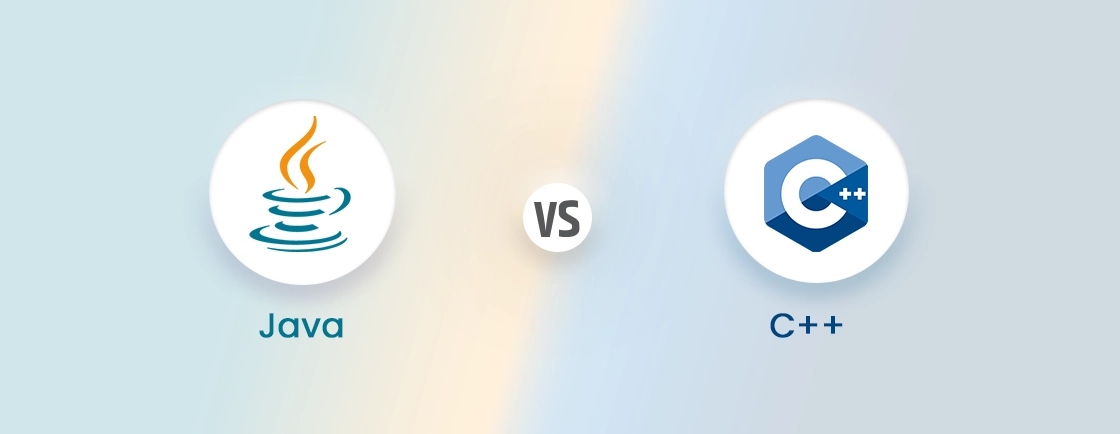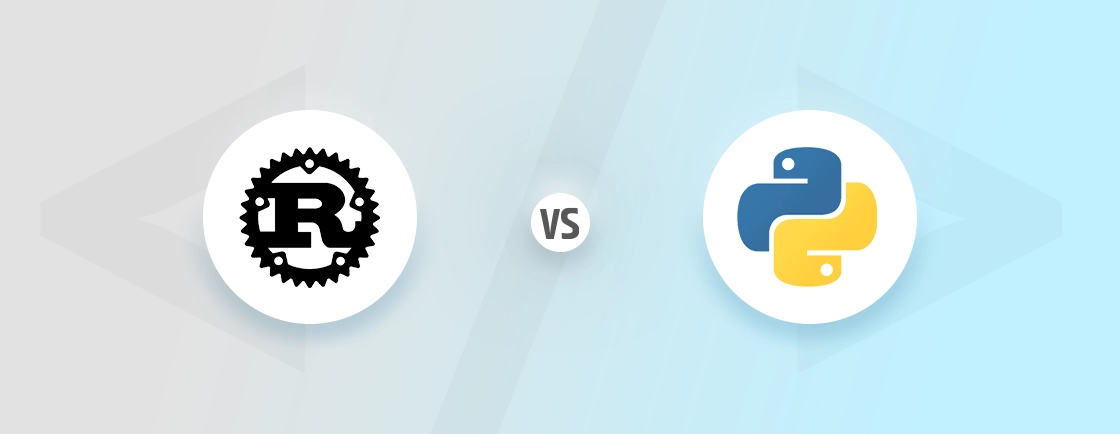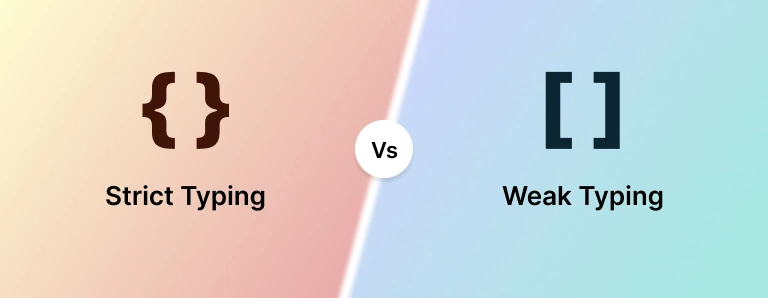Table of Contents
PHP Vs JavaScript? Which one is better for website development? Both these open-source scripting languages have been around for more than two decades. They are preferred by web experts for front-end and back-end development tasks due to their extensive capabilities.
While PHP is the preferred language for front-end development, JavaScript is preferable for back-end development. But which of them is a better option for comprehensive website development? Well, it depends on a variety of factors, including speed and performance, extensibility, learning curve, and more. So you can imagine the choice being a little tricky without a detailed differentiation.
But don’t worry; we’ve compared JavaScript Vs PHP on a variety of factors that will help you choose the better development platform. Make sure you pay attention, as your final decision will determine how your website (or web application) turns out.
But first, let’s check out what PHP and JavaScript are.
What is PHP?
Introduced in 1994, PHP (or Hypertext Processor) is an open-source, back-end scripting language. It is used by web developers to build the server side of websites and web applications. So it runs on the web server rather than the user’s browser.
One of the highlights of PHP is its seamless integration with HTML. That allows the PHP developers to embed the code directly into their web pages (built with HTML). Moreover, they can combine dynamic content with static HTML markup to create dynamic websites. These websites can handle forms, interact with databases, and perform several other critical tasks.
Furthermore, PHP has an extensive standard library and a massive community of dedicated developers. This community has created a number of popular PHP frameworks (like Laravel, CodeIgniter, etc.), CMS, and more. Plus, there are other PHP development tools like IDEs, code editors, and more. They can help improve code accuracy, development efficiency, and website quality.
Key Features of PHP:
- Open-source: PHP and all of its frameworks are open-source. So you can create high-quality, customized websites through this platform.
- Easy-to-use: One of the PHP advantages is its usability. Anyone, with or without advanced coding understanding, can create high-quality websites with ease. Plus, there are several predefined functions to ease the PHP website development process. Moreover, there are several PHP development tools to ease the common or repetitive tasks of website development.
- Flexibility: Not only does PHP integrate well with other languages like HTML, JavaScript, etc., but it also runs on different operating systems like Windows, macOS, Linux, etc.
- Performance: PHP scripts have better performance compared to some of the other scripting languages. Plus, there are some PHP performance optimization techniques to improve the speed of the websites.
- Variety of Databases: PHP websites can be connected with a variety of databases, including MySQL, mSQL, MS-SQL, SQLite, etc.
- Vast Library: PHP includes a variety of functions and modules. These functions can help automate common development tasks. That includes handling file operations, manipulating strings, and more.
- Object-oriented Features: One of the best features of PHP is that it supports OOP (Object-oriented Programming). It improves the speed and introduces features like data encapsulation for the website.
These are just a few of the outstanding features offered by PHP that make it one of the best scripting languages on the internet. Next up, we have JavaScript.
Do you want to build the best core-focused web application? Then hire expert PHP developers and let us handle the development.
What is JavaScript?
Introduced in 1995, JavaScript is an open-source, front-end scripting language. It’s meant for building interactive and dynamic web pages. The JavaScript experts use this client-side scripting language to add interactivity and manipulate web page elements. They can also respond to user actions through JavaScript functions without the need for a page load.
While JavaScript is primarily known for front-end development, it can also be used on the server side. Node.js, a JavaScript runtime, enables server-side JavaScript execution. That lets the developers build full-stack applications using a unified language.
JavaScript’s versatility, ease of use, and its ability to enhance user experience through interactivity have made it an essential language for web development. It continues to evolve with new features and improvements. That has cemented its position as one of the cornerstones of modern web development.
Key Features of JavaScript:
- Interactivity: JavaScript allows developers to create interactive elements on web pages. So the HTML elements, CSS styles, and the ability can be manipulated to respond to user actions like mouse and keyboard clicks.
- DOM Manipulation: The Document Object Model (DOM) represents the structure of a web page. JavaScript provides powerful APIs to manipulate the DOM. So the developers can dynamically create, modify, or delete elements, change styles, and update content on the fly.
- Event-driven Programming: JavaScript follows an event-driven programming paradigm, where actions or events trigger specific code execution. Developers can define event handlers to respond to events like button clicks, form submissions, or page loading. That enables interactive and responsive web experiences.
- Cross-browser Compatibility: JavaScript is supported by all major web browsers like Google Chrome. That ensures JavaScript code runs consistently across different platforms and browsers.
- Asynchronous Programming: JavaScript supports asynchronous programming using mechanisms like callbacks, promises, and async/await.
- Integration with HTML and CSS: JavaScript seamlessly integrates with HTML and CSS. That allows the developers to dynamically manipulate and modify the content and styles of web pages.
- Extensibility: JavaScript has a vast ecosystem of libraries and frameworks such as React, Angular, and Vue.js. It provides additional tools, components, and patterns for building complex web applications.
Although you can decide between PHP and JavaScript based on the details and features, we recommend you go through the descriptive comparison as well.
Difference Between JavaScript & PHP
JavaScript and PHP are both outstanding programming languages for web development, which is why they are so popular. But there are some key differences with respect to a variety of factors. So to provide you with a definite verdict, we’ll compare JavaScript and PHP. Let’s start:
Usage & Community
As of 2022, an astonishing percentage of over 98% of websites around the world use JavaScript as their client-side language. One of the interesting facts is that the market share of JavaScript (over 95%) is larger than Java.
Moreover, JavaScript is used by world-class MNCs like Netflix, Uber, LinkedIn, Instagram, NASA, Trello, and more.
PHP is used by more than 77% of all websites live on the internet. A few of the most popular companies and websites using PHP are Facebook, Wikipedia, Lyft, Slack, Tumblr, WordPress.org, Pinterest, and more.
Verdict: Both PHP and JavaScript power loads of high-quality websites. Moreover, some of the biggest companies around the world use PHP and JavaScript for their websites. So the choice depends on your requirements and the factors shown below.
Speed & Performance
JavaScript is a client-side scripting language that runs directly in the user’s browser. Being optimized for browser environments, this language is known for its fast execution speed. Moreover, modern JavaScript engines like Google V8 (used in Chrome) have made significant performance improvements.
PHP, on the other hand, is a server-side scripting language. That means it runs on the server before sending the processed result to the client’s browser. Traditionally, web development experts consider PHP to be slower than JavaScript. But recent improvements in the PHP engine have narrowed the performance gap. Additionally, PHP benefits from caching mechanisms and can handle high loads efficiently.
Verdict: JavaScript generally has the edge in terms of speed and performance.
Security
JavaScript operates within the browser sandbox. That limits its access to the user’s system and enhances security. However, if not secured properly, JavaScript can be vulnerable to client-side attacks such as cross-site scripting (XSS).
However, PHP executes on the server before the client’s browser. That allows the PHP experts to implement server-side security measures effectively. However, PHP has had a history of security vulnerabilities, mainly due to insecure coding practices. That’s why you must opt for regular security updates and industry-standard coding practices. It will ensure your PHP website’s security.
Verdict: PHP has an advantage over JavaScript in terms of security. All thanks to its server-side execution and better control over security measures.
Extensibility
JavaScript has a vast ecosystem of libraries and frameworks like React, Angular, and Node.js. Moreover, this client-side language can be combined with HTML, XML, Ajax, and more. They allow for extensive customization and scalability. It is highly extensible and widely used for both front-end and back-end development.
On the other hand, PHP also has a wide range of libraries and frameworks, including Laravel and Symfony. Plus, it powers content management systems like WordPress. That makes it highly extensible for web development. PHP’s extensibility is primarily focused on server-side development.
Verdict: Both languages have excellent extensibility, but the choice between the two depends on the specific requirements of the project. However, we would go for JavaScript when it comes to extensibility.
Learning Curve
JavaScript has a relatively gentle learning curve, especially for beginners. It can be easily incorporated into HTML documents and requires minimal setup. However, as JavaScript’s ecosystem has grown in complexity, mastering advanced concepts and frameworks may need some effort.
But PHP has straightforward and intuitive syntax, making it easy to learn for beginners. It has extensive documentation and a large community. PHP facilitates learning and finding solutions to common problems.
Verdict: Both languages have a beginner-friendly learning curve, but JavaScript might have a slight advantage due to its wide range of applications and resources.
Runtime Environments
JavaScript runs in the browser environment. It allows for interactive and dynamic web page functionalities. Additionally, with the introduction of Node.js, JavaScript can also be executed on the server. That enables full-stack JavaScript development.
PHP is primarily used for server-side scripting, running on a web server with PHP installed. It integrates with various web servers (e.g., Apache, Nginx) and databases (e.g., MySQL, PostgreSQL) to process server-side requests and generate dynamic content.
Verdict: The choice depends on the specific project requirements. But JavaScript’s versatility with both client-side and server-side execution gives it an edge.
Syntax
JavaScript has a C-like syntax and is primarily used for client-side scripting. But it can also be used for server-side development with Node.js. It features dynamic typing and supports object-oriented, functional, and procedural programming paradigms.
<script>
document.write(“Hey WPWeb Infotech Subscribers!”);
</script>
PHP has a syntax similar to C and Perl and is primarily used for server-side scripting. It is designed for web development and features support for object-oriented and procedural programming styles. PHP also has specific features and syntax for interacting with databases.
<?php
echo “Hey WPWeb Infotech Subscribers!”;
?>
Verdict: Both languages have similar syntax structures, with slight variations. The choice of syntax preference is subjective and depends on the developer’s familiarity and project requirements.
Frameworks
JavaScript has a wide range of frameworks for various purposes. Some popular front-end frameworks include Angular, React, and Vue.js. That facilitates building interactive user interfaces. For back-end development, Node.js provides a runtime environment that enables server-side JavaScript execution.
PHP also has a robust ecosystem of frameworks. Laravel, Symfony, and CodeIgniter are popular PHP frameworks for building web applications. That provides features such as routing, database integration, and security mechanisms. WordPress, a widely used content management system, is also built on PHP.
Verdict: Both JavaScript and PHP have a rich selection of frameworks for different purposes. The choice of framework depends on the specific project requirements, development preferences, and community support.
Both JavaScript and PHP have their strengths and use cases. JavaScript shines in front-end web development, interactivity, and browser-based applications. PHP excels in server-side development, content management systems, and database-driven applications.
The verdict on which language is better depends on the specific project requirements and the developer’s expertise. Neither language is inherently superior; it’s important to consider factors like the development ecosystem, available libraries and frameworks, and the specific problem domain when making a choice.
Want a comprehensive web application with the best frontend and backend technologies? Then get our expert web development services.
JavaScript Vs PHP: Comparison Table
| Parameters | JavaScript | PHP |
|---|---|---|
| Founded | By Brendan Eich in 1995 | By Rasmus Lerdorf in 1994 |
| Purpose | Used for client-side scripting and web development | Primarily used for server-side scripting and web development |
| Learning Curve | Gentle learning curve with broad applications. | Relatively straightforward and beginner-friendly. |
| Runtime | Server-side execution on web servers with PHP installed. | Browser-based execution and can also run on the server (Node.js). |
| Frameworks | React, Angular, Vue.js, etc. | Laravel, symfony, CodeIgniter, etc. |
| Speed & Performance | Fast execution, especially in modern browsers with optimized engines. | Traditionally considered slower, but recent improvements have narrowed the gap. |
| Security | Operates within the browser sandbox, but vulnerable to client-side attacks if not secured. | Effective server-side security measures can be implemented. |
| Extensibility | Highly extensible with frameworks for both front-end and back-end development. | Well-suited for server-side development and database integration. |
| Popular Websites | Netflix, Uber, LinkedIn, Instagram, NASA, Trello, and more. | Facebook, Wikipedia, Lyft, Slack, Tumblr, WordPress.org, Pinterest, and more. |
Conclusion
Two of the best scripting languages used by the experts are PHP and JavaScript. Both power some massive company websites like Netflix, Uber, Facebook, Wikipedia, and more. But one of the most common questions raised by beginners is, “PHP vs JavaScript: Which is Better?”.
Choosing between JavaScript and PHP depends on various factors, including project requirements, developer expertise, and the desired ecosystem. JavaScript shines in front-end development and interactivity, while PHP excels in server-side scripting and database integration.
If you want to create high-quality websites with PHP or JavaScript, hire expert web developers with us today!
FAQs Related to JavaScript vs PHP
Can JavaScript replace PHP for server-side development?
Well, one of the best frameworks of JavaScript is Node.js. With this framework, you can use JavaScript for server-side development. That opens new possibilities for full-stack JavaScript development. However, PHP still has some of the best frameworks, like Laravel and CodeIgniter, for server-side scripting. That’s why it is used by over 77% of live websites. So the choice between the two depends on the project requirements and the developers’ expertise.
Is JavaScript or PHP more secure for web development?
Both languages have their own security considerations. JavaScript runs in the browser sandbox, which limits its access to the user’s system and enhances security. However, JavaScript can be vulnerable to client-side attacks like cross-site scripting (XSS) if not properly secured. PHP, as a server-side language, allows for implementing server-side security measures effectively. However, it has had a history of security vulnerabilities, primarily due to insecure coding practices. Regular security updates and best coding practices are crucial for maintaining security in both languages. PHP is usually considered to be more secure than JavaScript.
Which language is more suitable for database integration: JavaScript or PHP?
Both JavaScript and PHP can integrate with databases. However, PHP has historically been more commonly used for this purpose due to its extensive database support. That includes built-in functions for connecting and querying databases. JavaScript can also interact with databases, but it often requires additional frameworks or libraries, such as MongoDB for NoSQL databases.
Can JavaScript be used with PHP in web development?
Absolutely! JavaScript and PHP can be used together in web development. JavaScript can be used on the client side to enhance user interactivity, while PHP handles server-side processing and data manipulation. They complement each other in creating dynamic and interactive web applications.
Compare the best tech side by side.
Our in-depth comparisons help you see features, pros & cons, and choose the right tools confidently.





